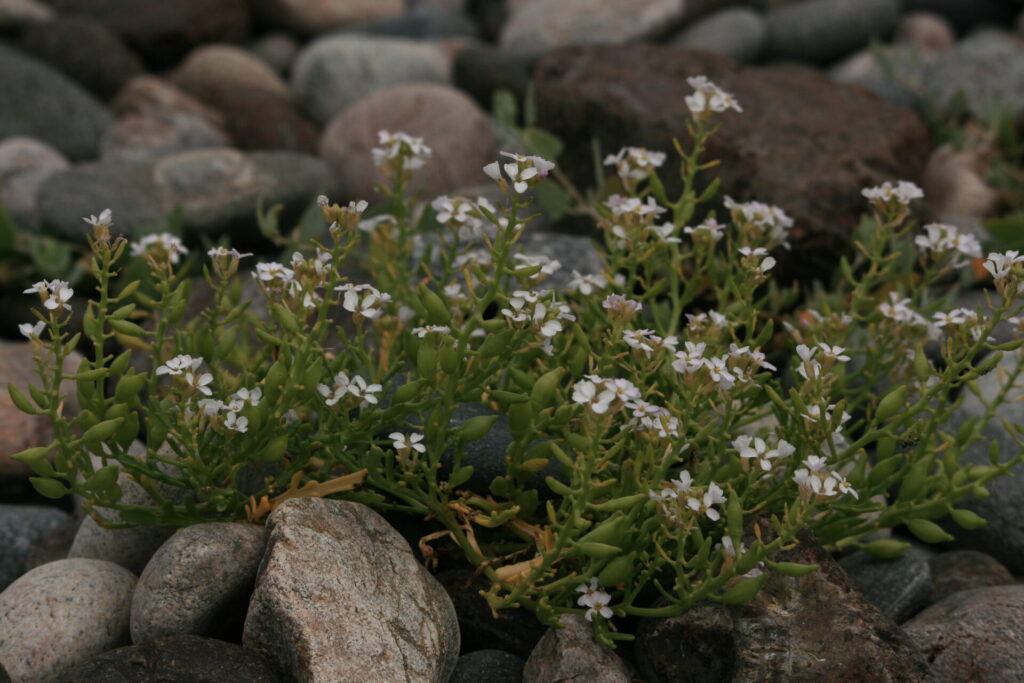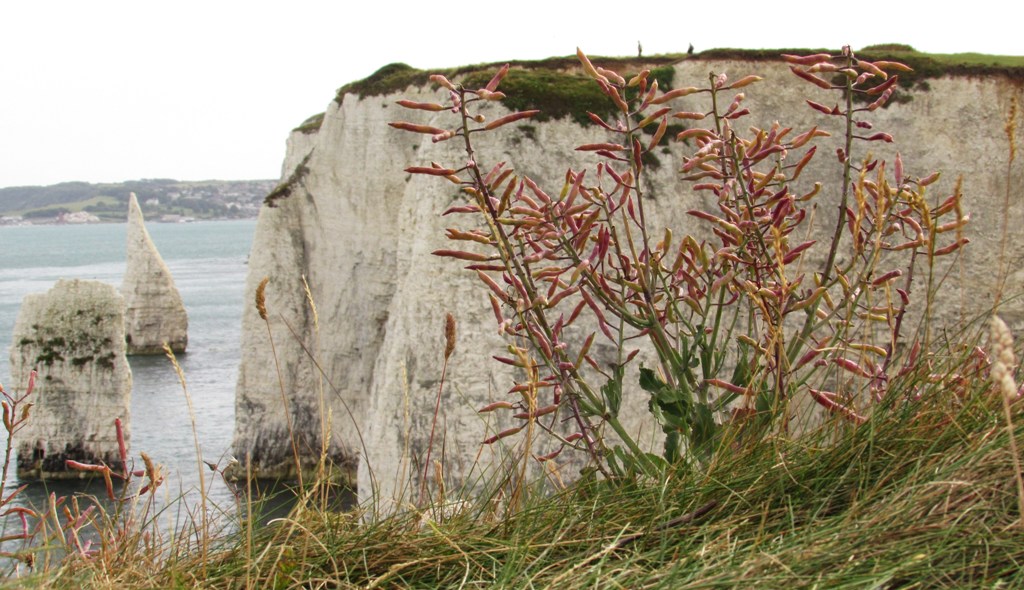
In Part 3, I will write about the pink and/or white flowered Crucifers which inhabit these Isles.
I follow the order of The Wild Flower Key as this has useful pictures which make identifying this somewhat unfamiliar and confusing family a lot easier!
I use the Online Atlas of the British and Irish Flora link on the First, italic, scientific names, so you can find out where it is likely to be found growing in the wild. You can also find other useful information here, especially its growing habitat and conditions!
On the Common Name link you can also find more information as well as useful pictures. Pictures in this post are by Matt Summers, Mike Poulton and sourced through Wikipedia Common with thanks.
Please use Jump-links in contents to read more about the individual genera & species on the next page!
Contents:
Group 5: Pink and/or white flowered Crucifers with elongated fruits.
Matthiola, Hesperis, Cakile & Lunaria
- Matthiola incana or Hoary Stock
- Matthiola sinuata or Sea Stock
- Hesperis matronalis or Dame’s-violet
- Cakile maritima or Sea Rocket
- Lunaria annua or Honesty
Cardamine
- Cardamine bulbifera or Coralroot
- Cardamine pratensis or Cuckooflower (Lady’s-smock)
- Cardamine flexuosa or Wavy Bitter-cress
- Cardamine hirsuta or Hairy Bitter-cress
- Cardamine impatiens or Narrow-leaved Bitter-cress
- Cardamine amara or Large Bitter-cress
Nasturtium
- Nasturtium officinale or Water-cress
- Nasturtium microphyllum or Narrow-fruited Water-cress
Arabis & Arabidopsis
- Arabis hirsuta or Hairy Rock-cress
- Arabis alpina or Alpine Rock-cress
- Arabis scabra or Bristol Rock-cress
- Arabidopsis petraea or Northern Rock-cress
- Arabidopsis thaliana or Thale Cress
Alliaria petiolata or Jack-by-the-Hedge/ Garlic Mustard
Draba & Drabella
- Draba incana or Hoary Whitlowgrass
- Draba norvegica or Rock Whitlowgrass
- Draba aizoides or Yellow Whitlowgrass
- Drabella muralis or Wall Whitlowgrass
Group 6: White flowered Crucifers with short fruits
Microthlaspi, Noccaea and Thlaspi
- Microthlaspi perfoliatum or Cotswold (Perfoliate) Penny-cress
- Noccaea caerulescens or Alpine Penny-cress
- Thlaspi arvense or Field Penny-cress
Lepidium
- Lepidium campestre or Field Pepperwort
- Lepidium heterophyllum or Smith’s Pepperwort
- Lepidium sativum or Garden Cress
- Lepidium ruderale or Narrow-leaved Pepperwort
- Lepidium draba or Hoary Cress
- Lepidium latifolium or Dittander
- Lepidium coronopus or Swine-cress
- Lepidium didymum or Lesser Swine-cress
TEESDALIA
- Teesdalia nudicaulis or Shepard’s Cress
Capsella, Iberis, Erophila
- Capsella bursa-pastoris or Shepard’s-purse
- Iberis amara or Wild Candytuft
- Erophila verna or Common Whitlowgrass
Cochlearia, Lobularia, Hornungia
- Cochlearia officinalis agg or Common Scurvygrass
- Cochlearia danica or Danish scurvygrass
- Cochlearica anglica or English Scurvygrass/ Long-leaved Scurvygrass
- Lobularia maritima or Sweet Alison
- Hornungia petraea or Hutchinsia
Group 7: White flowered Crucifers with very large leaves
Crambe & Armoracia
- Crambe maritima or Sea-kale
- Armoracia rusticana or Horse-radish

